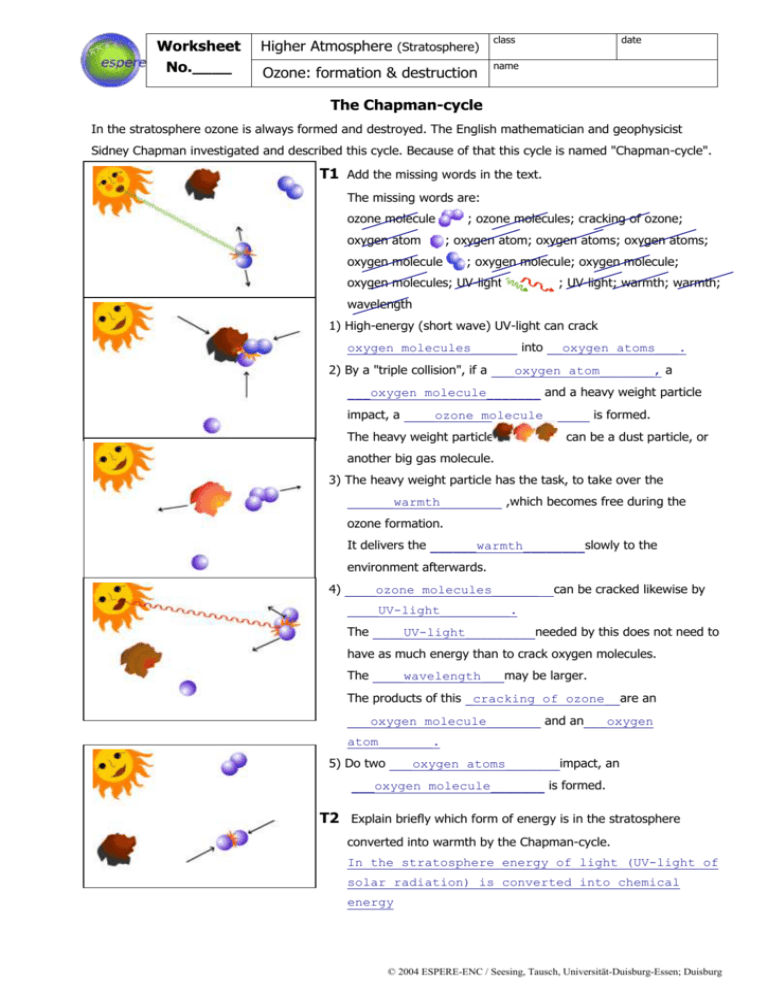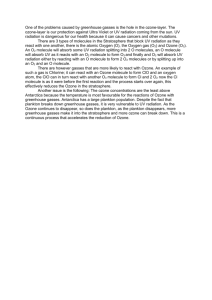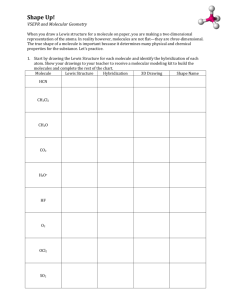Arbeitsblatt
advertisement

Worksheet No.____ Higher Atmosphere (Stratosphere) class Ozone: formation & destruction name date The Chapman-cycle In the stratosphere ozone is always formed and destroyed. The English mathematician and geophysicist Sidney Chapman investigated and described this cycle. Because of that this cycle is named "Chapman-cycle". T1 Add the missing words in the text. The missing words are: ozone molecule oxygen atom oxygen molecule ; ozone molecules; cracking of ozone; ; oxygen atom; oxygen atoms; oxygen atoms; ; oxygen molecule; oxygen molecule; oxygen molecules; UV-light ; UV-light; warmth; warmth; wavelength 1) High-energy (short wave) UV-light can crack oxygen molecules______ into __oxygen atoms___. 2) By a "triple collision", if a ___oxygen atom_______, a ___oxygen molecule_______ and a heavy weight particle impact, a ____ozone molecule______ is formed. The heavy weight particle can be a dust particle, or another big gas molecule. 3) The heavy weight particle has the task, to take over the ______warmth________ ,which becomes free during the ozone formation. It delivers the ______warmth________slowly to the environment afterwards. 4) ____ozone molecules______ can be cracked likewise by ____UV-light_________. The ____UV-light_________needed by this does not need to have as much energy than to crack oxygen molecules. The ____wavelength___may be larger. The products of this _cracking of ozone__are an ___oxygen molecule_______ and an___oxygen atom_______. 5) Do two ___oxygen atoms_______impact, an ___oxygen molecule_______ is formed. T2 Explain briefly which form of energy is in the stratosphere converted into warmth by the Chapman-cycle. In the stratosphere energy of light (UV-light of solar radiation) is converted into chemical energy © 2004 ESPERE-ENC / Seesing, Tausch, Universität-Duisburg-Essen; Duisburg by the splitting of oxygen molecules or ozone molecules. The chemical energy is converted into warmth by the triple collision, the formation of ozone, and by the formation of oxygen molecules. Altogether the energy of light is converted into warmth in the stratosphere. © 2004 ESPERE-ENC / Seesing, Tausch, Universität-Duisburg-Essen; Duisburg







